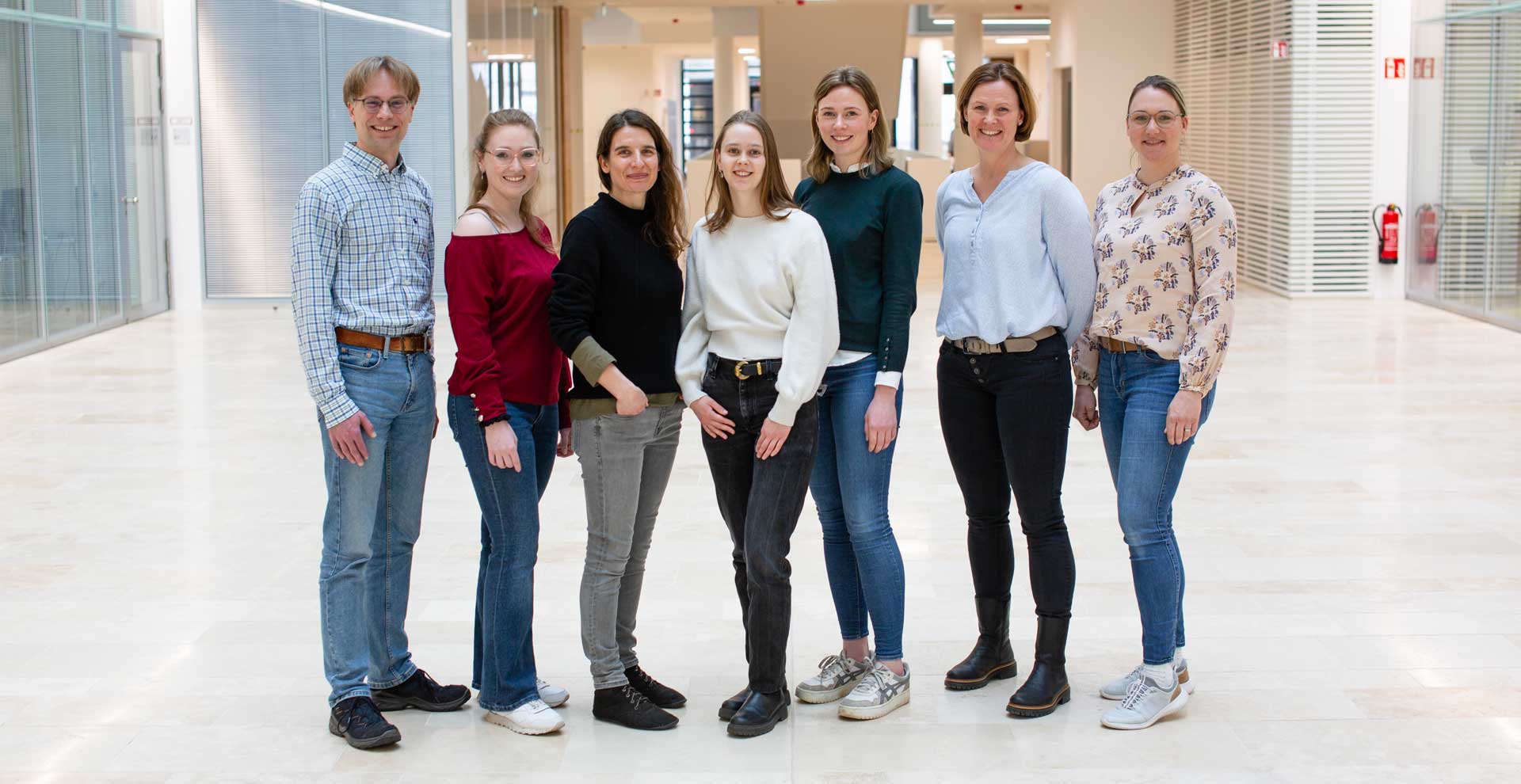Applied Stem Cell Biology

Team: Philip Seibler, PhD (Section Head); Michaela Trilck-Winkler, PhD (Postdoc, Head of Laboratory); Marija Dulovic, PhD (Postdoc); Karen Grütz, PhD (Postdoc); Leonora Kulikovskaja, MSc (PhD student); Insa Lenz, Dipl.-Ing. (Biotechnology); Franziska Rudolph, BSc (Research technologist); Karen Rieck (Research technologist); Beryll Klingler, BSc (Research technologist).
To study disease mechanisms of hereditary neurological disorders in a biologically relevant cell system, the research team “Applied Stem Cell Biology” employs induced pluripotent stem (iPS) cells generated by reprogramming of patient-specific skin fibroblasts. These iPS cells are differentiated into disease-linked neuronal subtypes. Therefore, any of the differentiated neurons harbor the same disease-causing mutation as is present in the patient and thus provide an excellent model. We focus on monogenic models of the movement disorders Parkinson disease (Parkin, PINK1, VPS35) and dystonia (TOR1A, THAP1, SGCE) to examine cellular dysfunction of mitochondrial and endosomal pathways in the diseased cell type.
We recently identified Stomatin-like protein 2 (SLP-2) as a new interactor of the Parkin protein and our data suggest that overexpression of SLP-2 might, in the absence of Parkin, compensate for this deficiency, restoring vital mitochondrial and neuronal function.
Further, VPS35 associates with the excitatory AMPA-type glutamate receptors and we find increased GluR1 AMPAR subunit cluster intensity in dopaminergic neurons harboring VPS35 mutations. This indicates a defective endogenous GluR1 trafficking which might produce chronic pathophysiological stress upon neuronal circuits that may contribute to neurodegeneration.
Projects are funded by the German Research Foundation (DFG), the German Federal Ministry of Education and Research (BMBF), the European Union, and the Hermann and Lilly Schilling Foundation.
We collaborate with several national and international colleagues including Prof. Matthew Farrer (University of British Columbia, Vancouver, Canada) and Prof. Dimitri Krainc (Northwestern University Feinberg School of Medicine, Chicago, USA). Finally, the team is involved in the European Innovative Medicines Initiative (IMI) on human iPS cells for cellular phenotyping and drug discovery, StemBANCC.


Functional characterization of dopaminergic neurons derived from induced pluripotent stem cells:
After 100 days of differentiation, spontaneous action potentials could be detected and neurons filled with neurobiotin were counter-stained for the dopaminergic marker tyrosine hydroxylase to confirm the neuronal identity. Dopamine release was analyzed under basal conditions and upon treatment with depolarizing potassium chloride or dopamine receptor agonist quinpirole.- Translational Neurogenetics
- Genetics of Rare Diseases
- Functional Genetics of Movement Disorders
- Integrative Omics in Parkinson Disease
- Neuropsychiatric Epidemiology
- Clinical Neurogenetics and Neuroimaging
- Mitochondrial function in movement disorders
- Institut für Systemische Motorikforschung
- Applied Stem Cell Biology